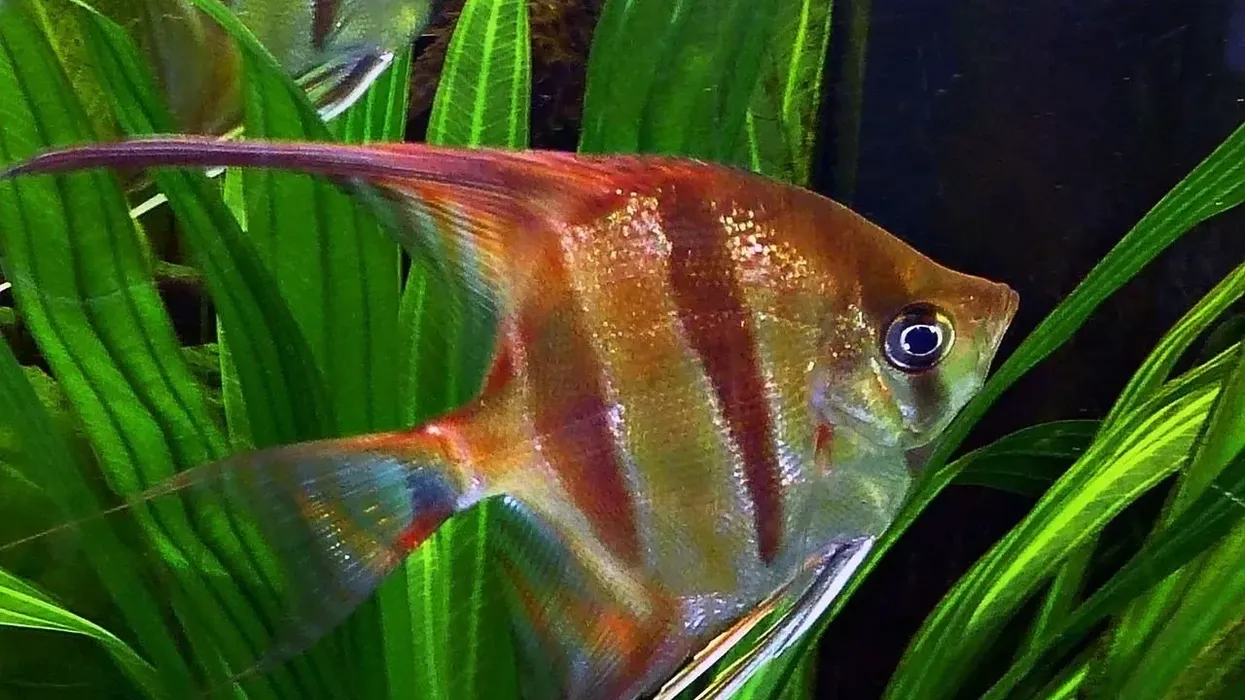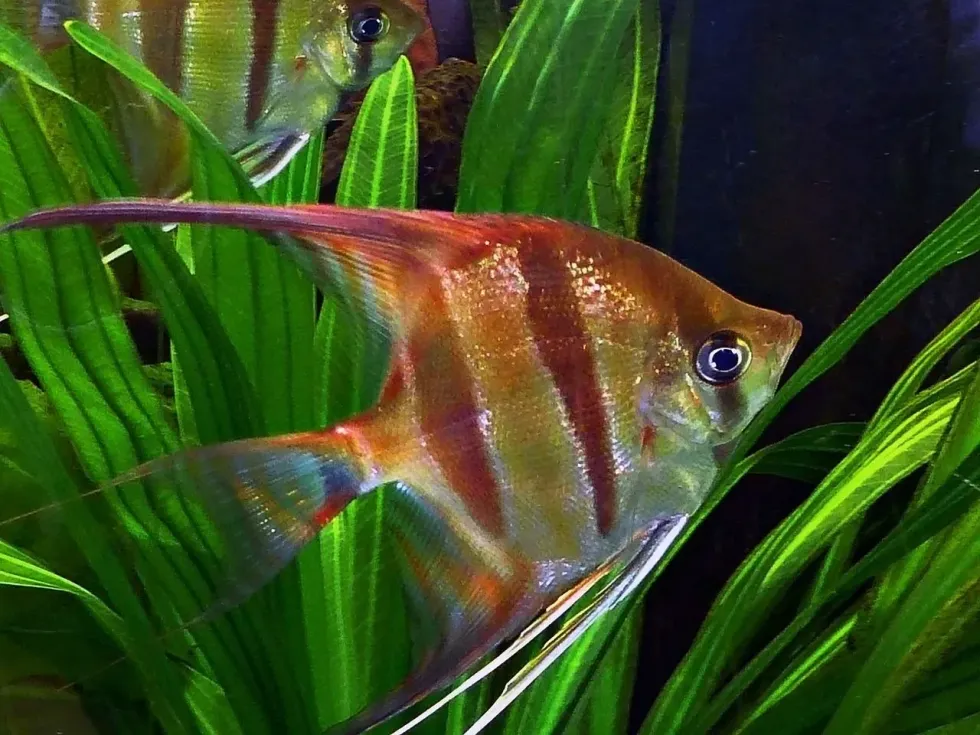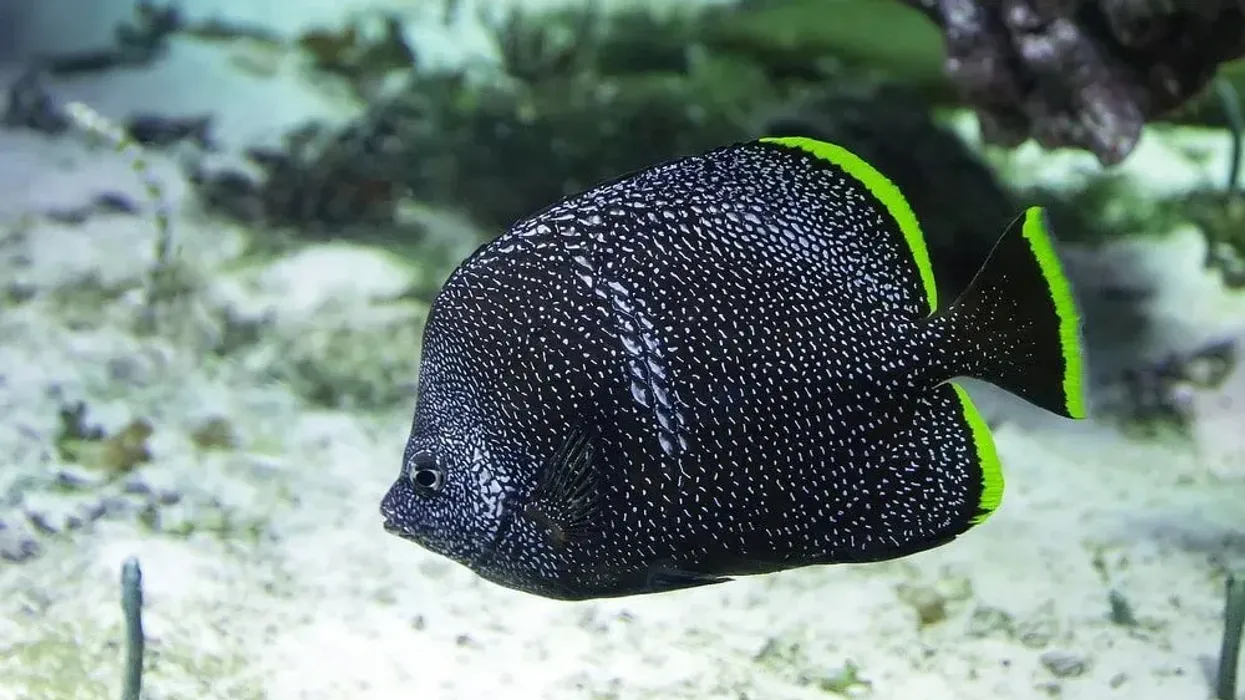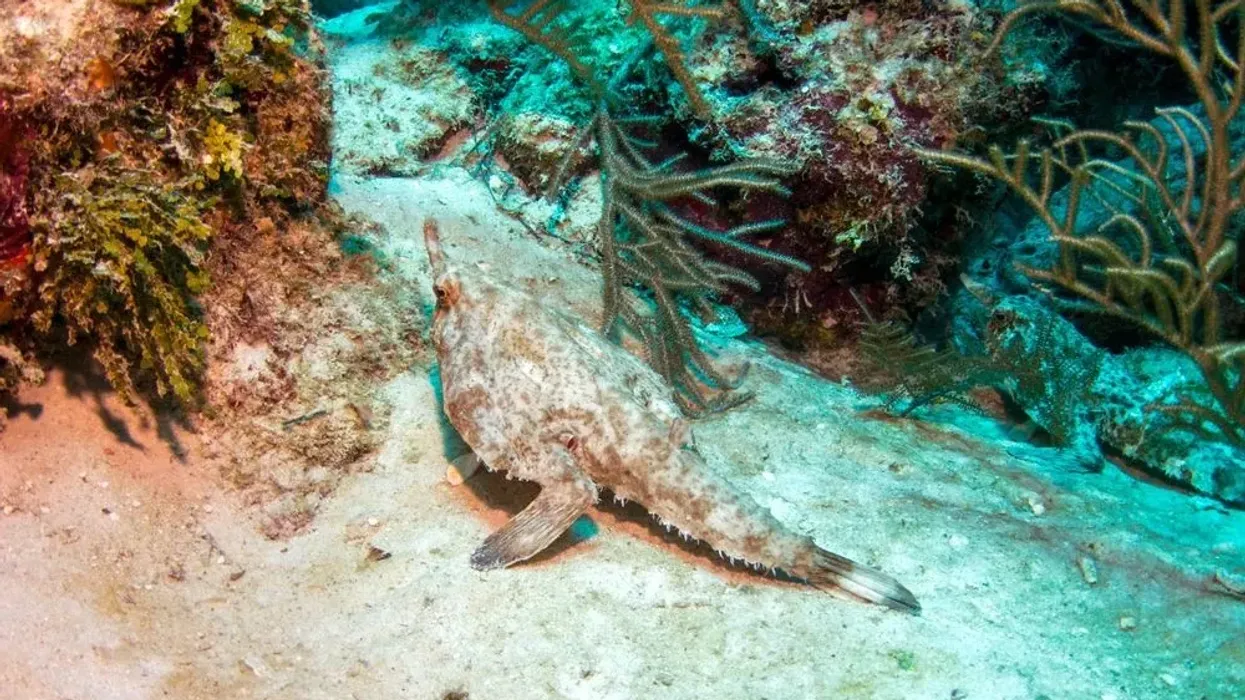Orange angelfish are also known as koi angelfish since they resemble the famous Japanese koi fish. There are plenty of different types of angelfish, including the leopard angelfish, gold angelfish, zebra angelfish, koi angelfish, blushing angelfish, silver angelfish, and more.
Angelfish can be found in a range of colors including, blue, yellow, silver, orange and dark black. They are found both in ocean waters and freshwaters and are also commonly kept in aquarium tanks as pets.
This colorful marine fish is native to South America and is found in tropical waters. Koi angelfish are stunningly similar to Japanese koi fish, and as a juvenile, this fish may have a red hue under its eyes which fades as they mature.
They are possibly the most recognized freshwater fish in an aquarium tank, and they belong to the Cichlidae family. These koi angelfish have also been admired for their peaceful behavior.
They require a big aquarium as they grow to quite a large size when fully grown. Tall tanks are recommended to accommodate their body shape comfortably. They are an omnivorous fish species and, even though they are peaceful fish, they act quite aggressively towards each other, especially when they attempt to pair off and spawn.
If you enjoy learning about the koi angelfish, you can learn also more about other marine fish species by checking out our herring and chum salmon facts too!
Orange Angelfish Interesting Facts
What type of animal is an orange angelfish?
This marine fish species is a type of ray-finned fish and is a member of the Cichlidae family.
What class of animal does an orange angelfish belong to?
The orange angelfish species belongs to the Actinopterygii class of animal.
How many orange angelfish are there in the world?
The total number of orange angelfish present in the world is currently unknown. As this is such a popular pet breed of fish, they can be found in aquariums around the world, as well as in their natural habitat range in the wild.
Where does an orange angelfish live?
An orange angelfish generally lives in the ocean in tropical waters, or in freshwater, or a fish tank or aquarium since they are aquarium fish. In their natural marine habitat, they live in corals and between rocks underwater, and among algae or seagrasses.
What is an orange angelfish's habitat?
A typical orange koi angelfish habitat is found in the ocean but they can also be found in freshwater habitats.
They are indigenous to tropical South America and are found in the Amazon River, the Orinoco Basin, and in tributaries in Brazil and Eastern Ecuador. They usually dwell in slow moving waters under dense vegetation and between rocky areas where they can feed on crustaceans, plants, algae, and insects.
They are found both in salty and fresh water, but this fish's color is more visible and better in clear, freshwater.
Who does an orange angelfish live with?
This tropical fish species is solitary unless they pair up for spawning.
How long does an orange angelfish live?
An angelfish species kept in an aquarium tank can generally live up to 10 years with the proper care and a healthy diet.
How do they reproduce?
Oange angelfish (Pterophyllum heckel) are known to form pairs to spawn easily, but often they act aggressive towards other angelfish during the spawning period since each pair prefers a quiet space with privacy.
They usually clean a flat vertical surface where they wish to lay their eggs, and they are known to actively chase other fish away from this site.
Spawning takes place when a female angelfish lays eggs on the clean surface, while a male follows and fertilizes them.
Young angelfish do not take much time to hatch.
Depending on the tank condition and the water temperature, hatching of their young in captivity takes place in two to three days. However, most angelfish in captivity have lost their rearing instincts and sadly end up eating their own eggs or even their fry!
What is their conservation status?
The conservation status of this freshwater fish species is Not Extinct, since their population is relatively stable. Despite this, there are some threats to the population, such as water pollution and other big fish. However, most of these fish are raised and taken care of in aquariums which is a safe place for them.
Orange Angelfish Fun Facts
What do orange angelfish look like?
Angelfish, as juveniles, appear orange and most adults will have strong orange color rather than red. This fish has complex color genetics and all angelfish differ in color, structure, and features.
An adult orange angelfish has mottled black and white coloration, with varying amounts of gold on its head, but this depends on the genes they acquire. This marine species has a lace-like, see-through, long silver color dorsal fin.
It has a stunning coloration of black, orange, pink, and white, and they have a flat body structure that allows them to swim lightly underwater.
Their color distribution can be observed best in a freshwater aquarium. Also, their color changes as they age.
How cute are they?
This tropical angelfish is known for its colorful combinations and the fact that it is easy to keep and raise in a freshwater tank or aquarium. They are attractive and amusing to look at, and their peaceful behavior definitely adds to their cuteness.
How do they communicate?
The ways in which these aquarium fish species communicate with each other are not currently known.
How big is an orange angelfish?
With a length of 8-12 in (20-30 cm), this fish species is five times bigger than the clownfish, which is also a tank fish and is seen in similar orange, white and black colors.
How fast can an orange angelfish swim?
The swimming speed of this marine angelfish is unknown, but generally, they are slow swimmers who tend to swim calmly. However, during spawning, they act aggressively by chasing other fishes away and living in pairs.
How much does an orange angelfish weigh?
Their weight can range between 27-32 (0.77-0.9 kg).
What are their male and female names of the species?
Male and female angelfish are not described separately, since they are both known as angelfish in general.
What would you call a baby orange angelfish?
Young angelfish are known as fry.
What do they eat?
This fish breed has a simple diet that consists of crustaceans, shrimp, algae, sea grapes, insects, and worms found in sea plants.
Are they poisonous?
This fish is one of the least poisonous marine species.
Would they make a good pet?
Angelfish are often found for sale as they are a great pet or aquarium fish. They have commonly been raised in a fish tank and are known as quite friendly fish, which are also easy to raise since they can be fed with both small fishes and plant-based foods.
Their relatively small size also means that they can be easily looked after in a fish tank.
You can find these fish as pets for sale all around the world as they are very popular. It is recommended to keep no more than two angelfish in a tank together.
Did you know...
The amount of orange color present on an angelfish body and dorsal fin varies depending on the stress level of the fish and the water temperature. Their orange color will darken if they are under high levels of stress.
Therefore, it is easy for an owner to understand when they are stressed and to fix whatever is causing discomfort for them.
The peppermint angelfish is the most expensive angelfish to exist and the black phantom angelfish is the rarest angelfish! The dark black color of the black phantom angelfish makes it stand out against the array of bright blue, silver, and yellow other species of angelfish.
Humans often enjoy eating angelfish. It is commonly served baked, steamed, or fried.
Do they bite?
No, this fish species is known to be calm and friendly, so they do not bite.
What colors do angelfish come in?
Angelfish come in different colors depending on the species they belong to. Their colors include orange, black, dark gray, blue, silver, and even yellow to reddish.
On some tropical angelfish, black, orange, and white stripes can even be seen!
Among this group of fish, the zebra angelfish is known to have a long dorsal fin with green and dark shade stripes and some yellow distribution too, while the golden angelfish looks like a see through fish with its detailed fin patterns and light green or white color body.
Here at Kidadl, we have carefully created lots of interesting family-friendly animal facts for everyone to discover! Learn more about some other fish from our marlin facts and yellowfin tuna facts pages.
You can even occupy yourself at home by coloring in one of our free printable fresh water angelfish coloring pages.










